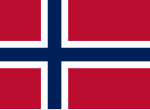Corruption in Norway ranks amongst the lowest in the world.
On Transparency International's 2022 Corruption Perceptions Index, Norway scored 84 on a scale from 0 ("highly corrupt") to 100 ("very clean"). When ranked by score, Norway ranked 4th among the 180 countries in the Index, where the country ranked first is perceived to have the most honest public sector. [1] For comparison, the best score was 90 (ranked 1), and the worst score was 12 (ranked 180).[2]
In 2017 Norway was ranked the most corrupt country in Scandinavia after Yara International, Telenor, Statoil, Norsk Hydro and Kongsberg, all large Norwegian companies in which the state government owns substantial stakes, faced corruption charges.[3]
According to a report by the Norwegian School of Economics, "corruption in Norway is typically present at the municipal administration, municipal planning and building departments, and procurement departments". The report also stated that "research shows that in some municipalities, ties between public and private parties can sometimes be too close. Some municipalities are very active in their anticorruption work, and they have good notification channels and active control committees. In other places, there is a significant number of leaders in the municipal sector who have experienced attempts of corruption – and those trying to report the matter meet resistance."[4]
See also
[edit]References
[edit]- ^ "The ABCs of the CPI: How the Corruption Perceptions Index is calculated". Transparency.org. 20 December 2021. Retrieved 5 February 2023.
- ^ "Corruption Perceptions Index 2022: Norway". Transparency.org. 31 January 2023. Retrieved 5 February 2023.
- ^ "Norway high and low on corruption list". Newsinenglish.no. 25 January 2017. Retrieved 25 January 2017.
- ^ "Corruption researcher:– Governments trust has been reduced". NHH.

Well, that’s interesting to know that Psilotum nudum are known as whisk ferns. Psilotum nudum is the commoner species of the two. While the P. flaccidum is a rare species and is found in the tropical islands. Both the species are usually epiphytic in habit and grow upon tree ferns. These species may also be terrestrial and grow in humus or in the crevices of the rocks.
View the detailed Guide of Psilotum nudum: Detailed Study Of Psilotum Nudum (Whisk Fern), Classification, Anatomy, Reproduction